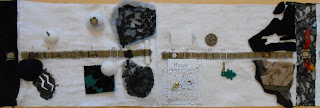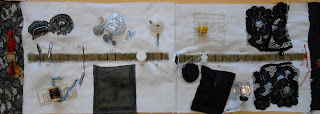Peter Pan is remembered as the boy who would "never grow up." Made famous by the 1904 play, Peter Pan, and the 1911 novel, Peter and Wendy, Peter is a classic character in children’s literature. Often, however, people forget that there is more to Peter Pan's author J. M. Barrie than Neverland. A quick search through Rauner can show Barrie's path to Pan and much more about the author’s professional and personal life.
J. M. Barrie began his literary career in 1888, with the Auld Licht Idylls. While Auld Licht and other sentimental novels allowed Barrie to achieve moderate success, his fame stemmed from his character Peter Pan. Peter first appeared in 1902, as a minor character in Barrie's novel for adults, The Little White Bird. It was in the 1904 play, however, that Peter made it big. Revisiting Peter Pan and Peter and Wendy, you might be surprised – the books are a bit darker than the Disney cartoon images I have in my mind. If you want to expand your Barrie repertoire, Rauner has many of Barrie's other less well known works, including "Der Tag:" or The Tragic Man and What Every Woman Knows.
Rauner also offers glimpses behind-the-scenes into Barrie's life. A letter in response to an invitation for a dinner honoring Stephen Crane at The Sing o' the Lanthorn gives us a taste of Barrie's connections. While Barrie was unable to make the dinner, he wrote of his enjoyment of The Red Badge of Courage. His correspondence with Gabriel Wells shows Barrie as an established author, with a well-regarded publisher and book-dealer pursuing his work. Or, you can flip through a scrapbook of material from 1888 to 1928 showing the transformation of Peter Pan from a fragment of Barrie's imagination to a film sensation.
To see the original The Little White Bird ask for Rare Book PZ 3.B277 Li2; the Peter Pan illustrated by Trina Schart Hyman is Illus H997ba; the Gabriel Wells Correspondence is in MS-585; and the Peter Pan Scrapbook is MS 118.
Posted for Kate Taylor '13
Friday, March 15, 2013
Tuesday, March 12, 2013
Gaming in Rauner
From time to time we come across an author that so distorts the typical conception of a "book" that we wonder--is this really a book at all? Angela Lorenz is one such author. Life, Life, Eternal Life: Uncle Wiggily Meets the Pilgrim’s Progress, Lorenz's "book" not a traditional book at all, but a handmade board game. As the title suggests, this board game is a meeting of the classic 334 year old Christian Parable, The Pilgrim's Progress, by John Bunyan and the board game Uncle Wiggily.
In this game, players take turns drawing cards and moving their pieces along the board following Christian's journey from the City of Destruction, Bunyan's earth, to the Celestial City, Bunyan's heaven. Similar to Uncle Wiggily, players receive help or hindrance from characters in Bunyan’s story--from Faithful, Christian's companion and friend, to Beelzebub, a devil who guards the road to heaven and shoots arrows at anyone who tries to pass. Players must also compete in a number of tasks--from a game of musical chairs, or "Going to Jerusalem," to a game of croquet, where players must hit their playing pieces through the Wicket Gate to begin their journey, to target practice using a handmade catapult, to spinning a teetorum, a sort of Christian dreidel, to cross over the River of Death.
"Why play this game at all?" Lorenz asks. "Well, in doing so you can get the gist of the biggest best seller next to the Bible and martyrologies for the last 300 years, one of the few books found for two centuries in many American parlors." And it's one of the most fun books in Rauner! So bring your friends, stop by, and ask for Presses L876loli.
Posted for Ben Ferguson '15
In this game, players take turns drawing cards and moving their pieces along the board following Christian's journey from the City of Destruction, Bunyan's earth, to the Celestial City, Bunyan's heaven. Similar to Uncle Wiggily, players receive help or hindrance from characters in Bunyan’s story--from Faithful, Christian's companion and friend, to Beelzebub, a devil who guards the road to heaven and shoots arrows at anyone who tries to pass. Players must also compete in a number of tasks--from a game of musical chairs, or "Going to Jerusalem," to a game of croquet, where players must hit their playing pieces through the Wicket Gate to begin their journey, to target practice using a handmade catapult, to spinning a teetorum, a sort of Christian dreidel, to cross over the River of Death.
"Why play this game at all?" Lorenz asks. "Well, in doing so you can get the gist of the biggest best seller next to the Bible and martyrologies for the last 300 years, one of the few books found for two centuries in many American parlors." And it's one of the most fun books in Rauner! So bring your friends, stop by, and ask for Presses L876loli.
Posted for Ben Ferguson '15
Subscribe to:
Comments
(
Atom
)






